Step into the sanctuary where nature meets innovation, the organic modern kitchen. Sleek lines dance with natural textures while earthy tones embrace minimalist design.
A kitchen isn’t merely a place to prepare meals; it’s the beating heart of your home where memories simmer alongside your favorite recipes.
These kitchens blend biophilic elements with contemporary aesthetics, creating spaces that nourish both body and soul.
Warm woods paired with cool stones, abundant natural light streaming through unadorned windows, and sustainable materials that tell stories of conscientious choices.
This is the essence of organic and modern design. The result? A serene, functional space that celebrates both environmental consciousness and cutting-edge design sensibilities.
Why Organic Kitchens Feel Like Home
Ever walked into a kitchen and instantly felt your shoulders relax? Open layouts in organic modern spaces do exactly that, they create gathering places where conversation flows naturally.
Run your fingers across that imperfect wooden countertop edge. These intentional “imperfections” speak to something primal in us, connecting with handcrafted originality.
Remember how your mood shifts with the changing light? Adaptive lighting in organic modern kitchens mimics those natural patterns, supporting your body’s rhythms.
That ceramic bowl wasn’t just purchased; it was chosen because it tells a story. Each element becomes a conversation piece reflecting your values.
What sensory experiences make you feel most at home? Organic modern kitchens engage all your senses, creating a multidimensional haven that feels instinctively right.
1. Live-Edge Wood Countertops
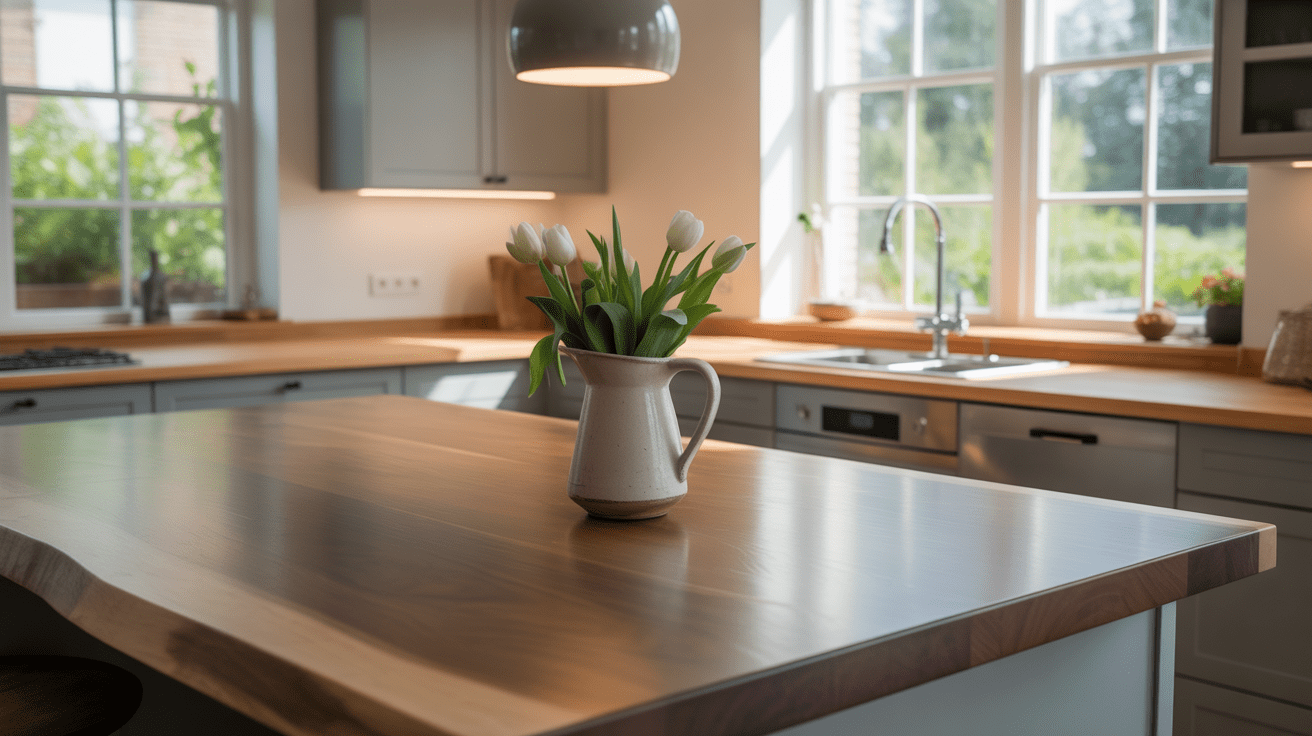
Live-edge wood countertops keep the natural tree shape intact, making a bold statement that brings outdoor elements inside. The uneven borders stand out against the straight lines found elsewhere in your cooking space.
These surfaces show their history through growth rings and distinctive marks, ensuring your kitchen remains one-of-a-kind. With proper treatment, they hold up surprisingly well while adding natural warmth to current design styles.
2. Curved Kitchen Islands
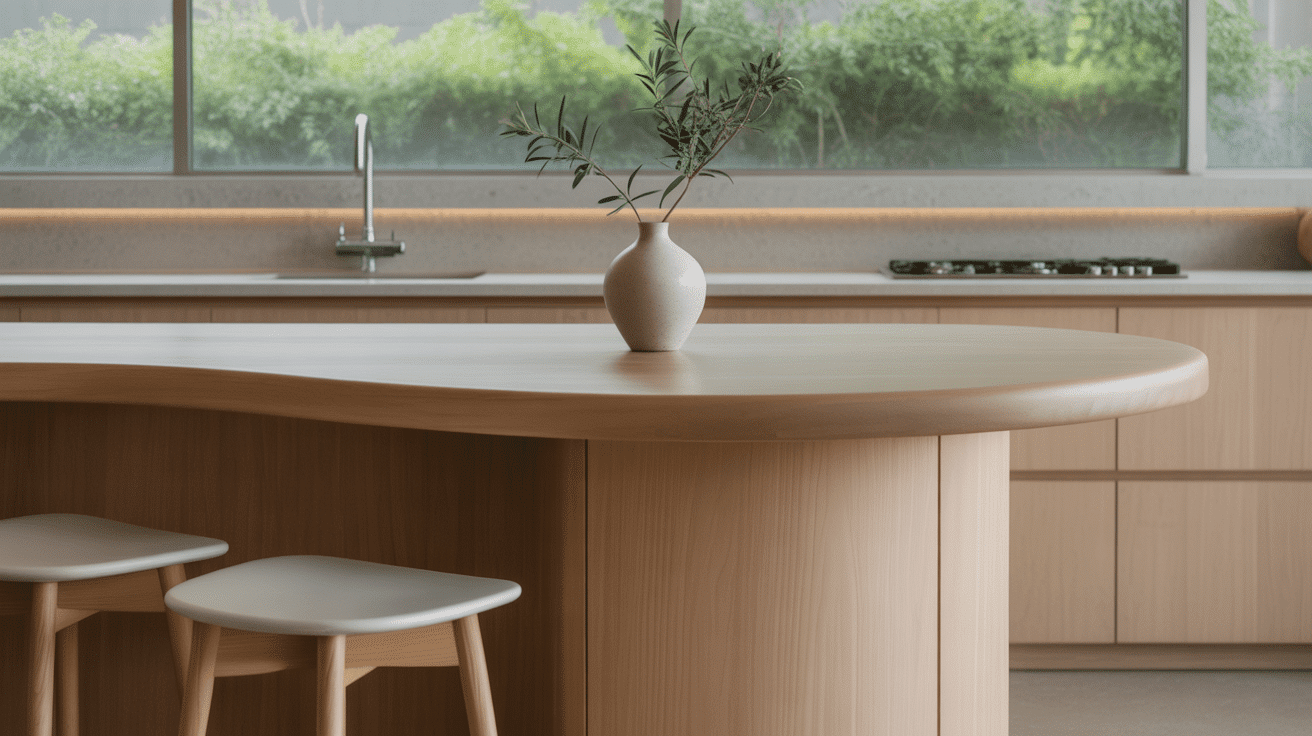
Curved kitchen islands remove sharp edges with smooth, flowing shapes that help people move around better and create natural gathering spots. The rounded outlines mirror forms seen in nature, making the overall kitchen feel less rigid.
These useful art pieces work as both practical counters and eye-catching centerpieces, looking good from any angle. The bending shape naturally helps conversation flow when guests visit.
3. Skylight Openings
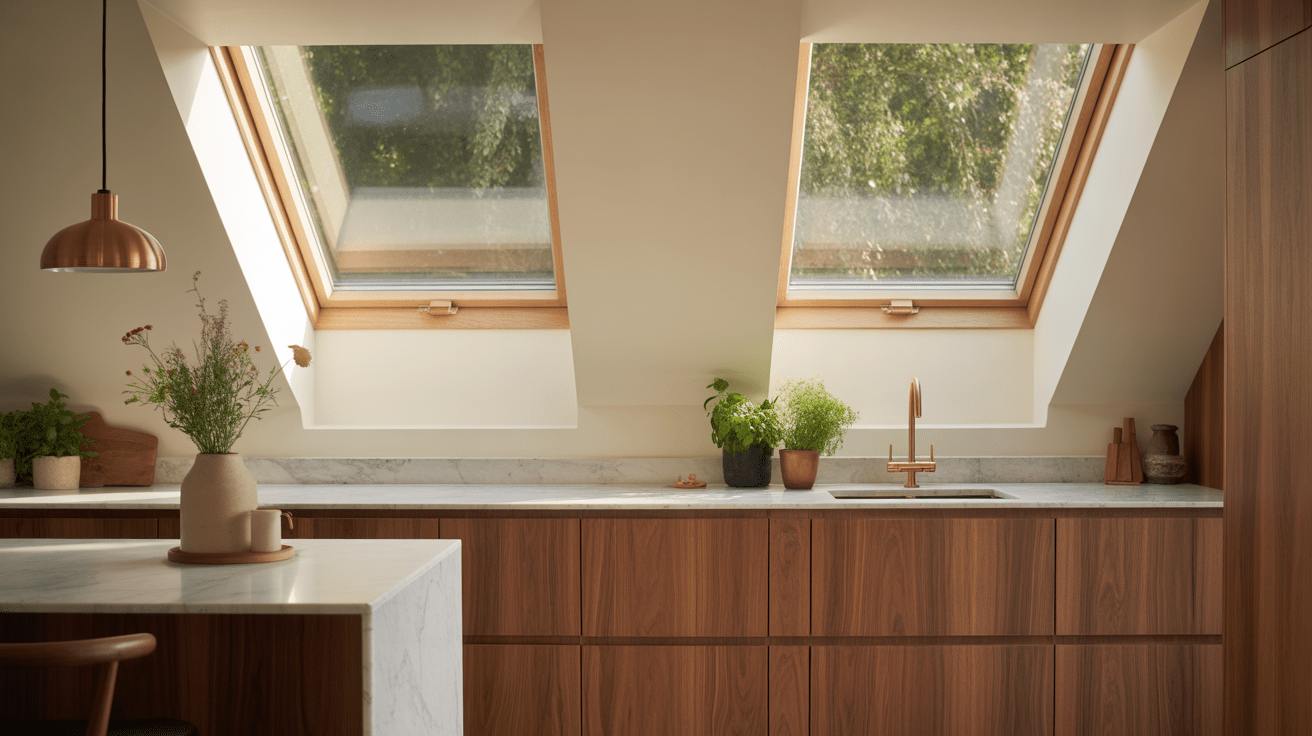
Skylight openings bring shifting daylight patterns directly into the kitchen, linking indoor rooms with the world outside. These roof features cast moving light shapes that change hour by hour.
Beyond looking good, plenty of sun cuts down on electric lights during daytime, saving power. The mental boost includes better mood and output while working on kitchen tasks.
4. Bamboo Cabinetry
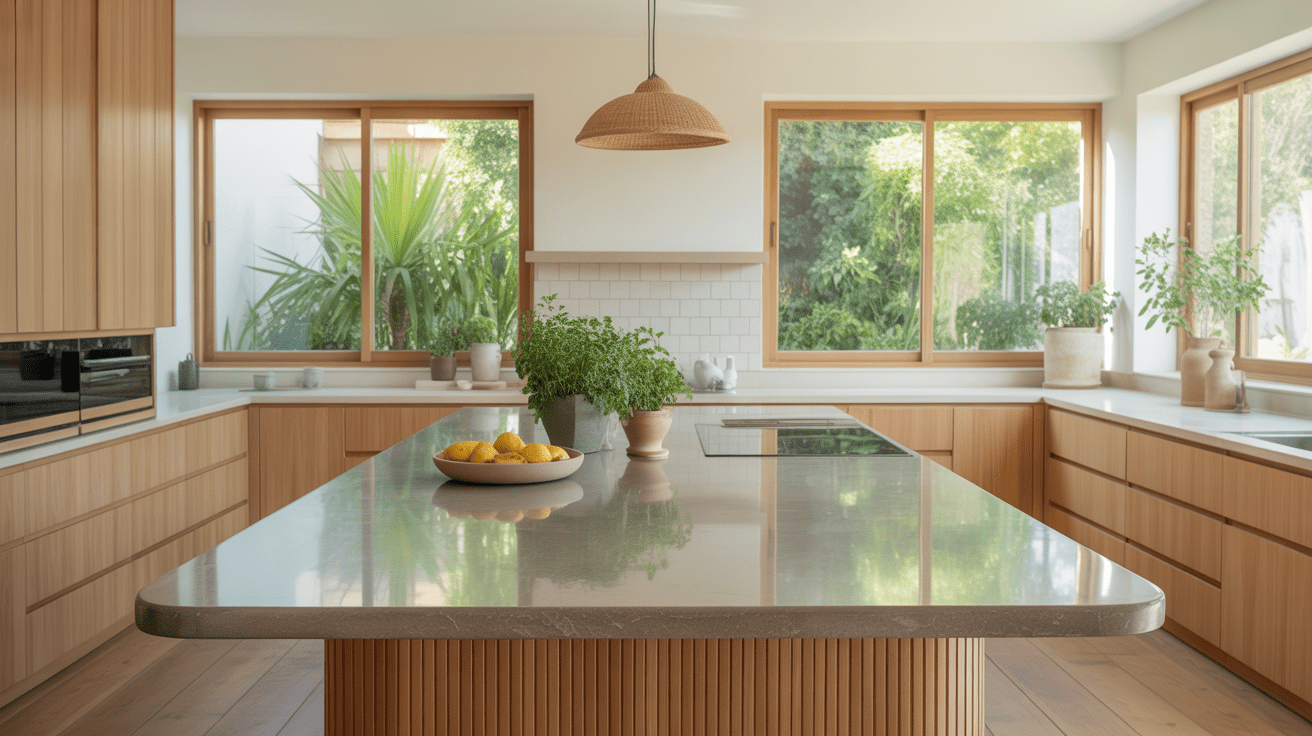
Bamboo cabinetry offers green building options with unique patterns that add subtle depth to modern kitchens. This quick-growing plant reaches full size in just 3-5 years, making it an earth-friendly choice.
Though it looks light, bamboo has remarkable strength; it is tougher than many hardwoods and some metals, too. Its golden tones add warmth to simple designs without taking over the room.
5. Handmade Ceramic Tile Backsplashes
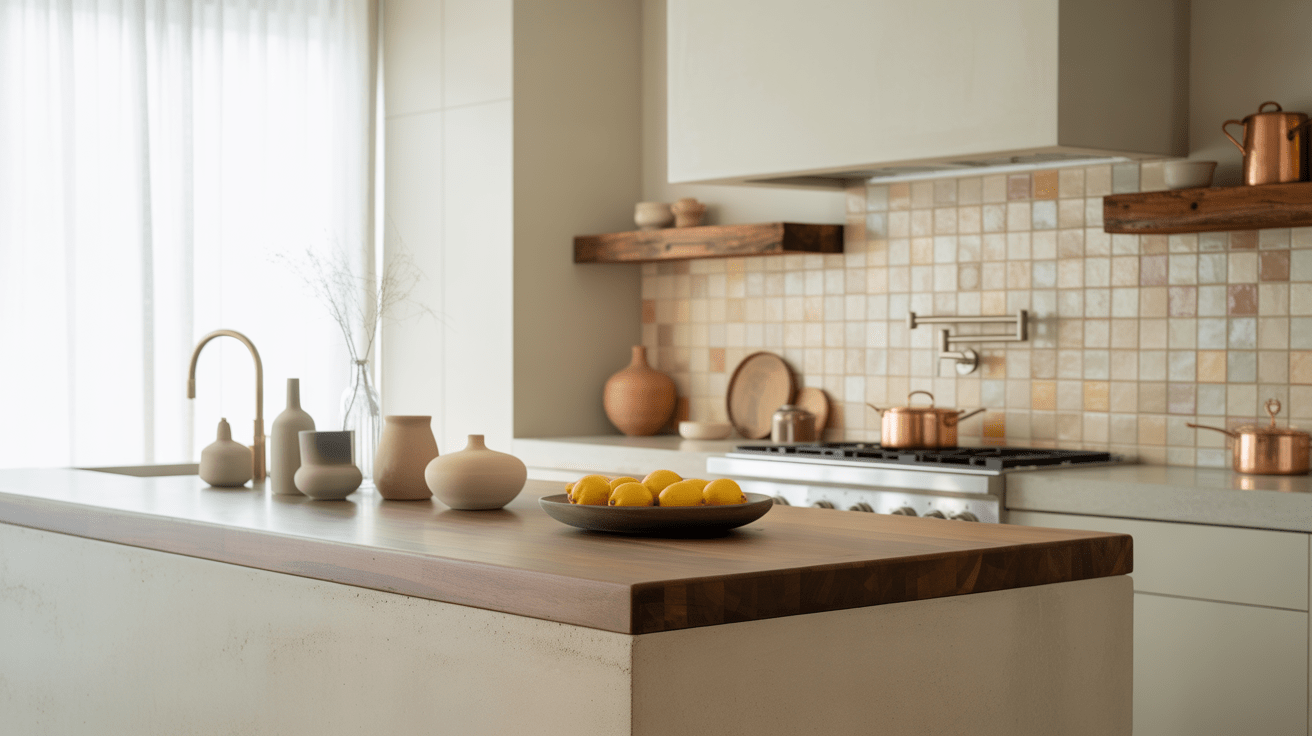
Handmade ceramic tile backsplashes show small differences in shade, feel, and size that create lively surfaces full of personality. These handcrafted elements bring depth to modern kitchens through their purposeful quirks.
The shiny surfaces catch light in changing ways throughout the day, shifting the mood as sunlight moves. Each piece shows its maker’s touch, bringing real craftsmanship into the most current kitchen designs.
6. Old-Growth Wood Open Shelves
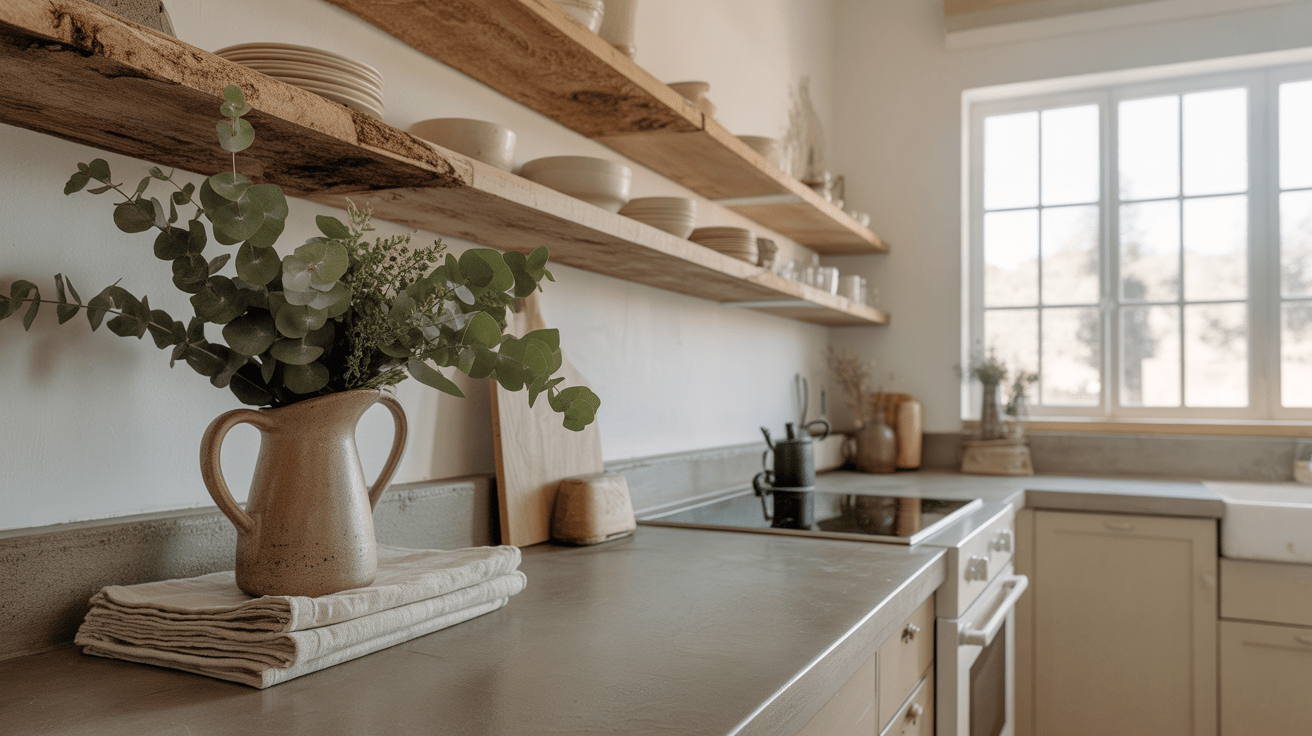
Old-growth wood open shelves show rich histories through knots, nail marks, and sun-bleached patches. These character-rich pieces tell stories while holding everyday kitchen items.
The steadiness of aged lumber makes these shelves less likely to bend than newer wood. Their honest wear happens over many years;something that machines can’t copy.
7. Cork Floors
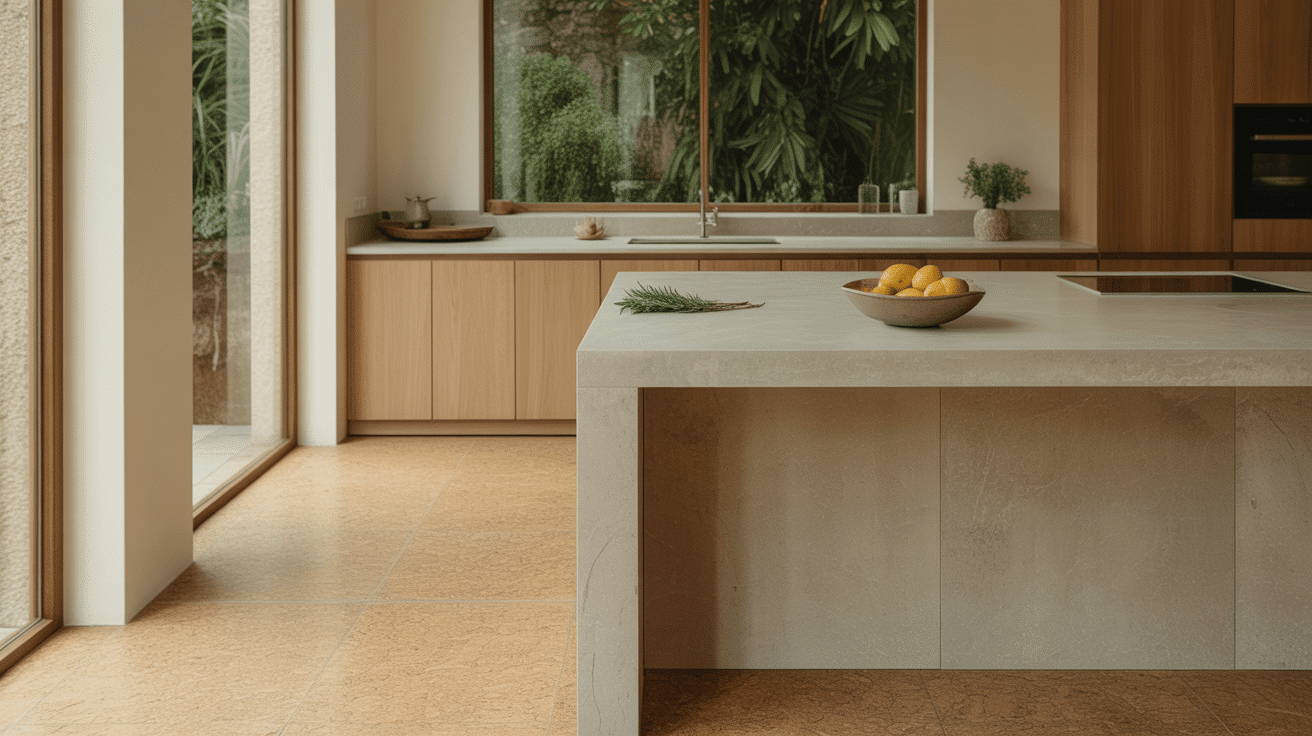
Cork floors give amazing comfort through millions of tiny air pockets that squish down and bounce back naturally. Cut from the outside of cork oak trees without killing them, this renewable source grows back every nine years.
The material’s natural give helps joints while cutting noise, very useful in kitchens without walls. Its warmth-keeping traits make floors cozy in winter and cool in summer.
8. Built-In Plant Gardens
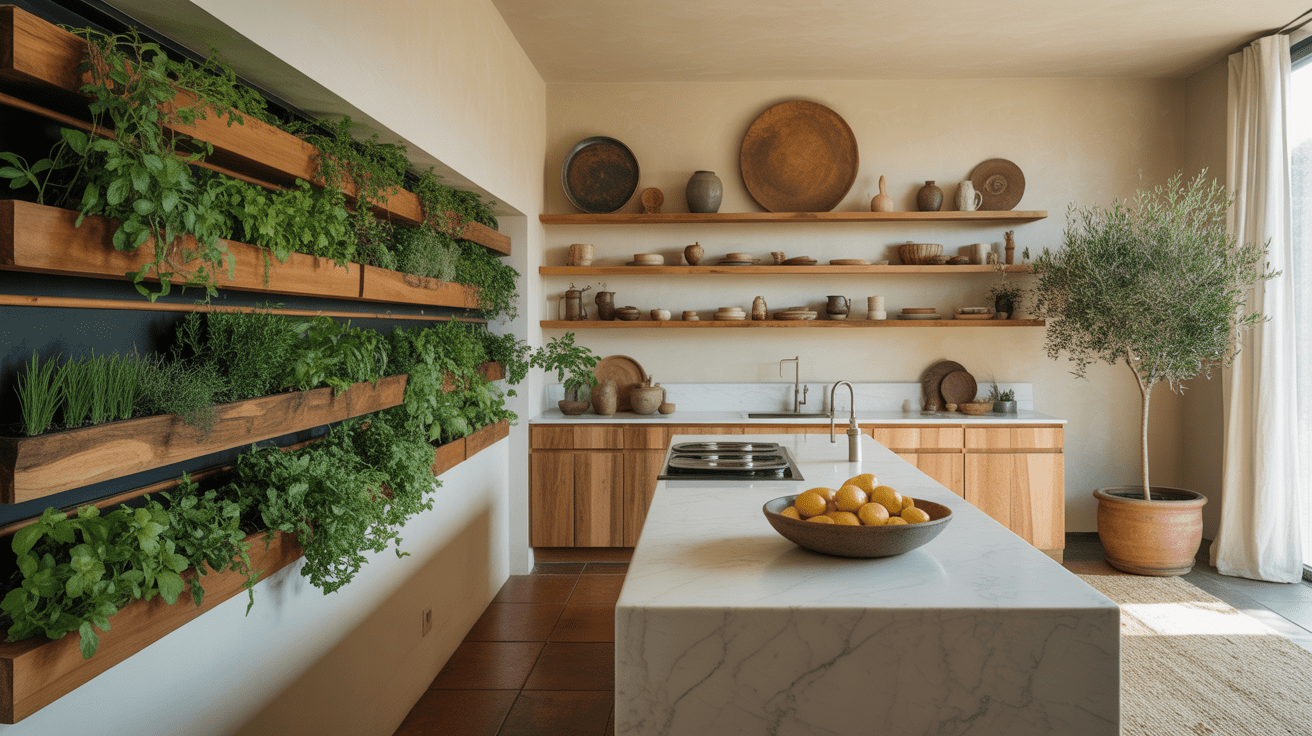
Built-in plant gardens add growing things right into the kitchen work area, making a useful link to nature. These upright or flat-growing spots supply fresh herbs year-round while adding bright green touches.
Past their good looks, these living sections clean indoor air and add many sensory notes through smell and texture. Having herbs within reach while cooking makes both the work and food better.
9. Woven Light Fixtures
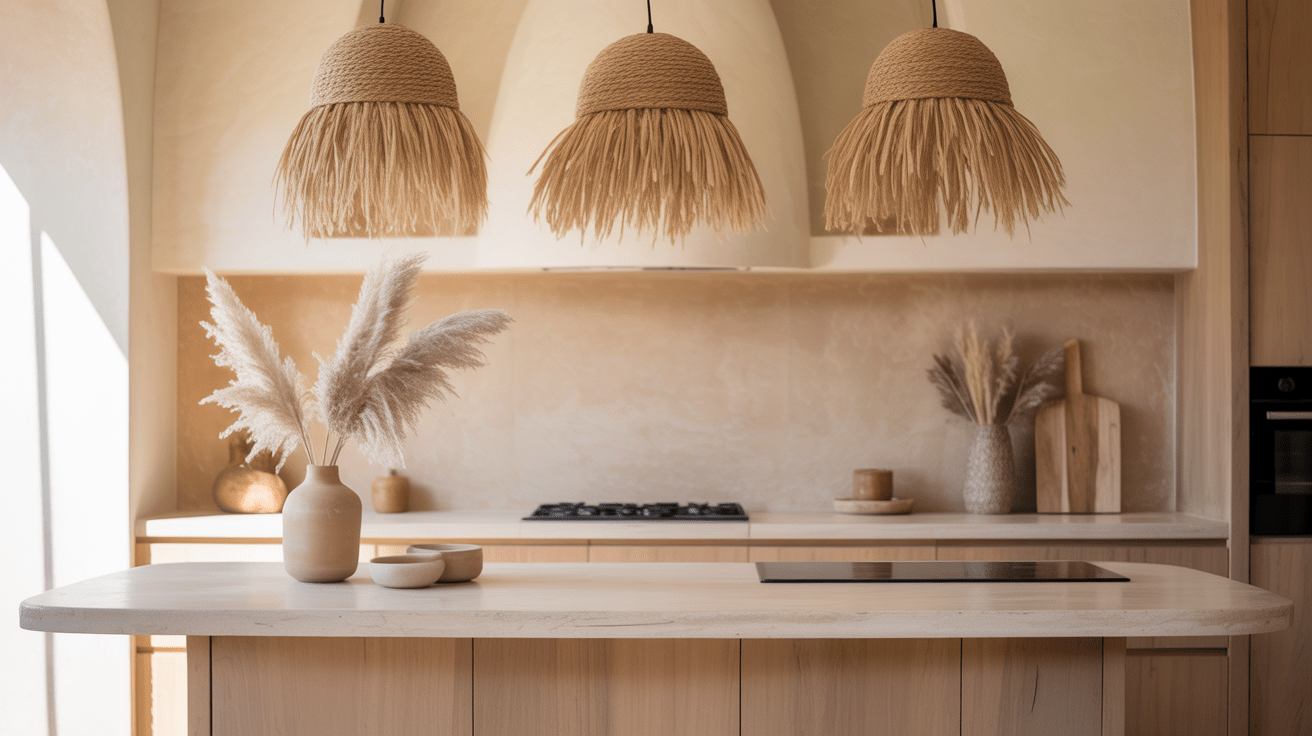
Woven light fixtures hang natural textures above through materials like twisted rattan, jute, or seagrass. When lit, these hangings create interesting shadow patterns, adding visual depth.
The tiny gaps in these materials spread light softly, making a warm, welcoming feeling perfect for eating areas. Their hand-made quality adds crafted charm to even the most basic kitchen plans.
10. Reclaimed Stone Sinks
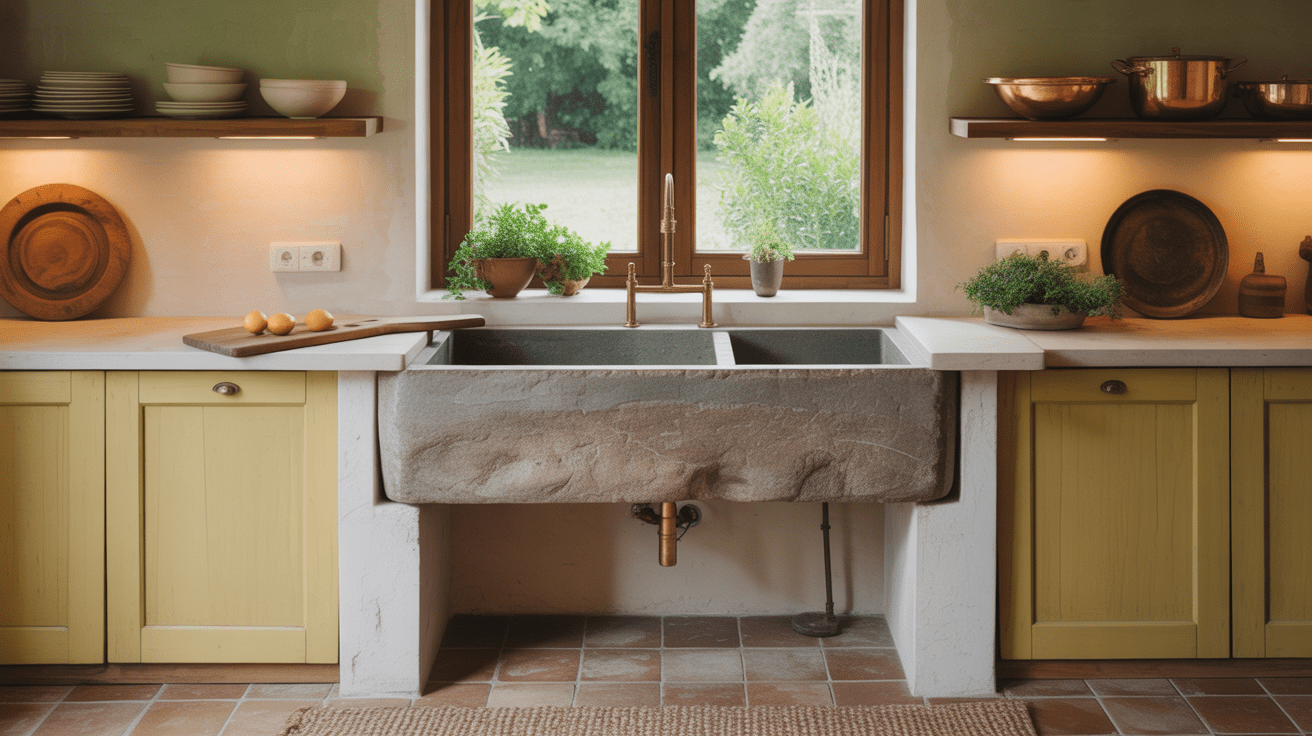
Reclaimed stone sinks carry years of character into modern kitchens, creating stark contrasts with flat, smooth surfaces. These single-source pieces often show natural wear that hints at their past use.
The thick rock makeup offers long-lasting toughness and heat protection, ideal for busy cooking spots. Their earth colors set a natural tone that can guide other design choices in the kitchen.
11. Limestone Floors
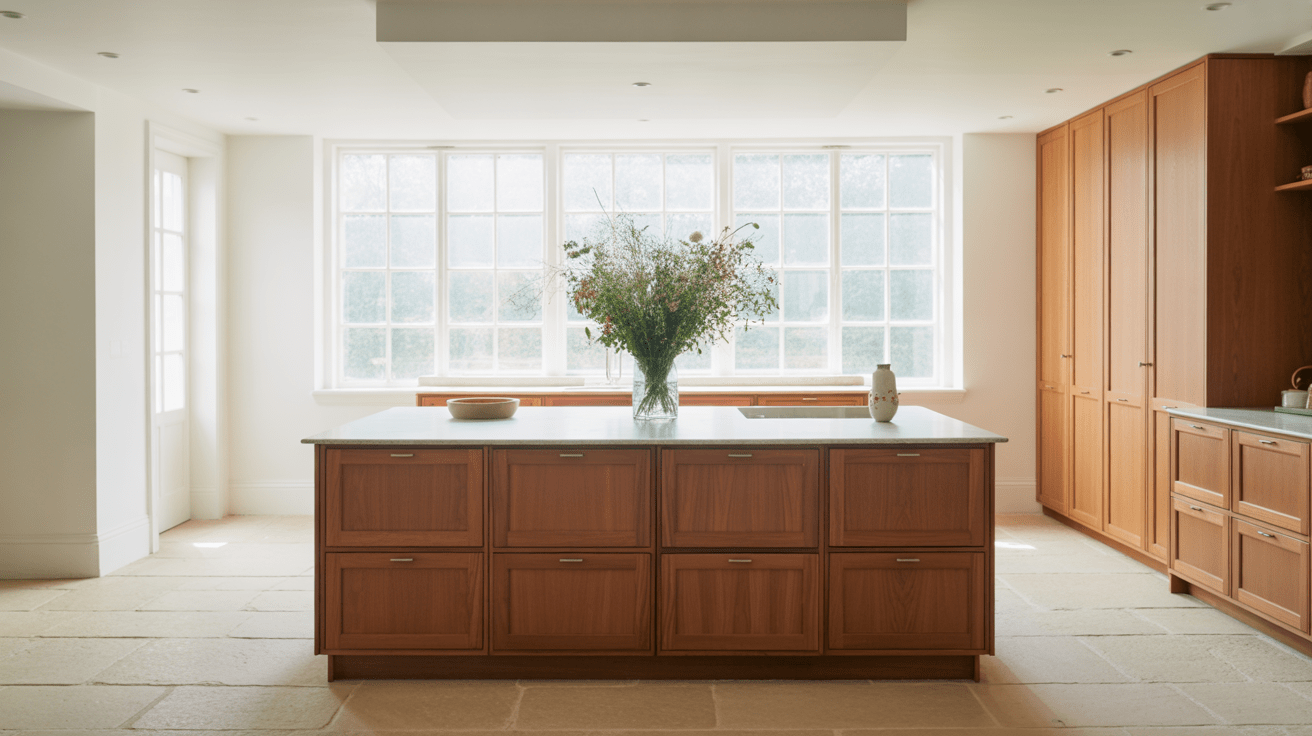
Limestone floors link kitchens to nature through rock formed across millions of years from packed sea fossils. The faint ancient shapes visible on its surface create depth in modern rooms.
This natural stone stays comfortable in all seasons, feeling cool during hot months and holding warmth in cold ones. Its non-glossy finish gives good footing while adding quiet texture to kitchen floors.
12. Mixed-Material Work Surfaces
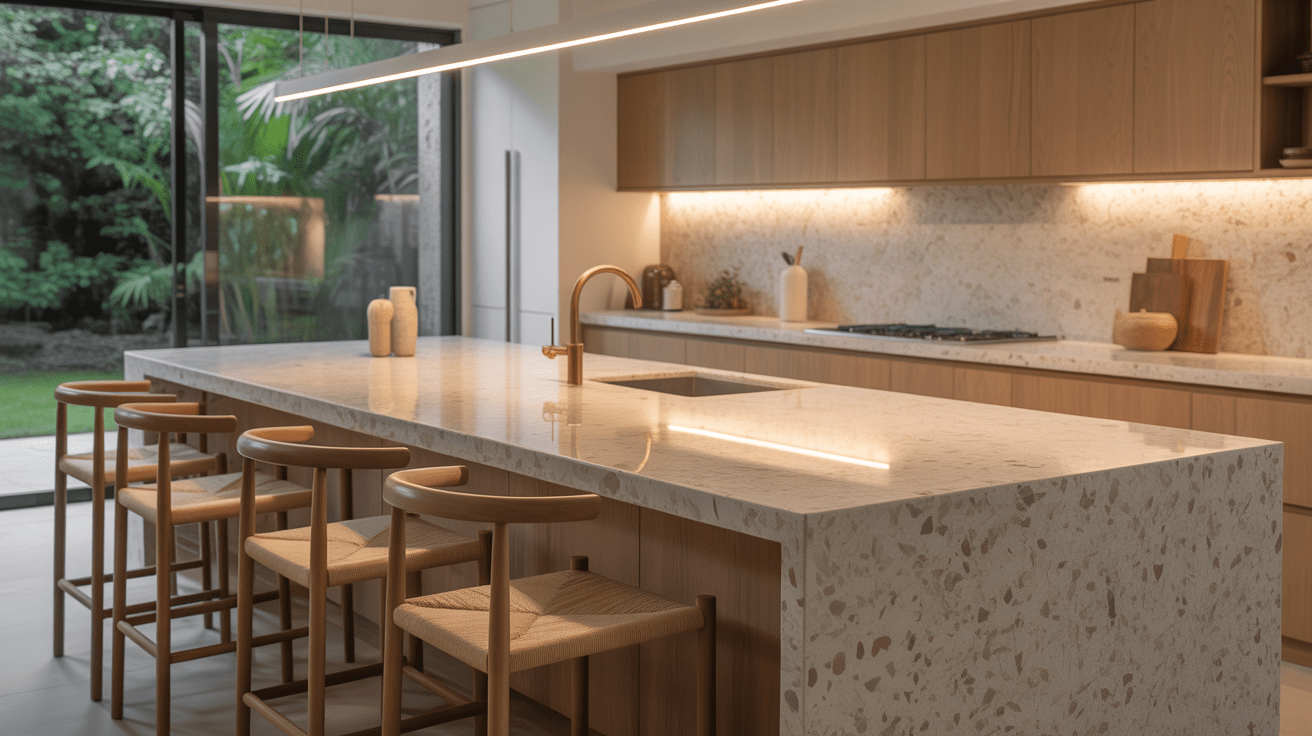
Mixed-material work surfaces show bits of stone, shells, or used glass set in concrete or resin. This highly changeable option mixes building methods with raw goods from nature.
The rich mix of items looks good both up close and from across the room; working as a whole from far away yet showing tiny details when near. These tough surfaces last through years of use while growing more distinct with time.
13. Earth Plaster Wall Coatings
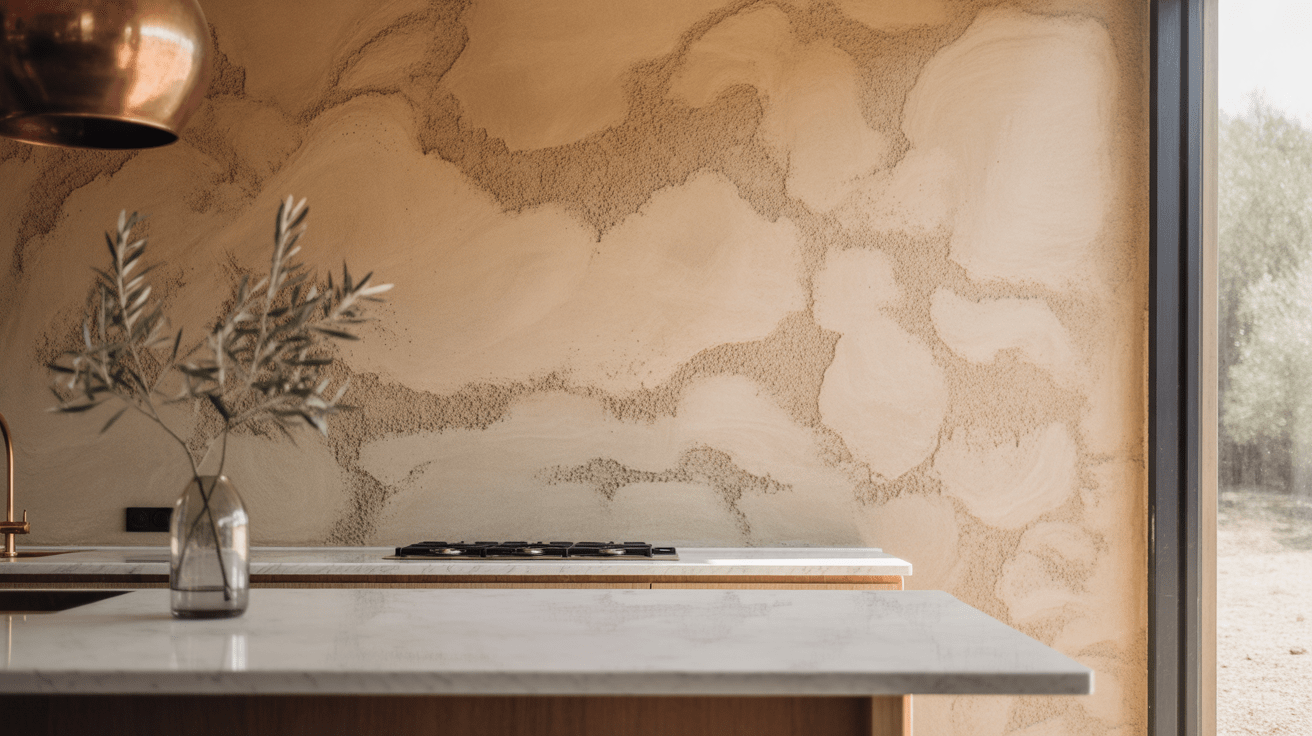
Earth plaster wall coatings offer breathing, textured surfaces through age-old building methods. These active wall surfaces control moisture while adding subtle touch points to today’s rooms.
The soil-based colors pulled from rock sources create richness that flat paint can’t match. Their small changes in color and feel make walls that seem hand-built rather than mass-made.
14. Hemp Cloth Window Coverings
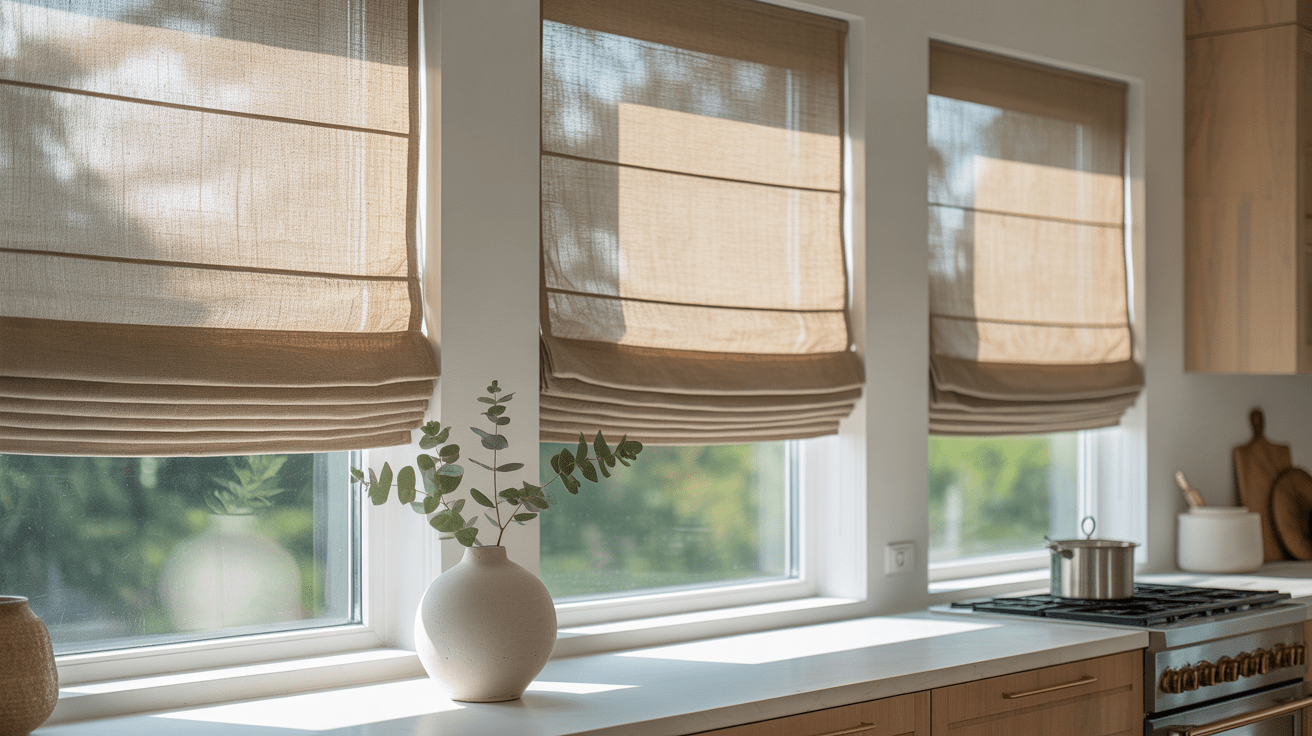
Hemp cloth window coverings soften light with clear-cut natural weaves while lasting for years. This green material gets better with age while keeping its structure for decades.
Hemp naturally fights off mold, dampness, and sun damage, making it right for kitchen settings. The cloth’s slight changes in thickness make beautiful light patterns throughout the day.
15. Pressed-Paper Work Surfaces
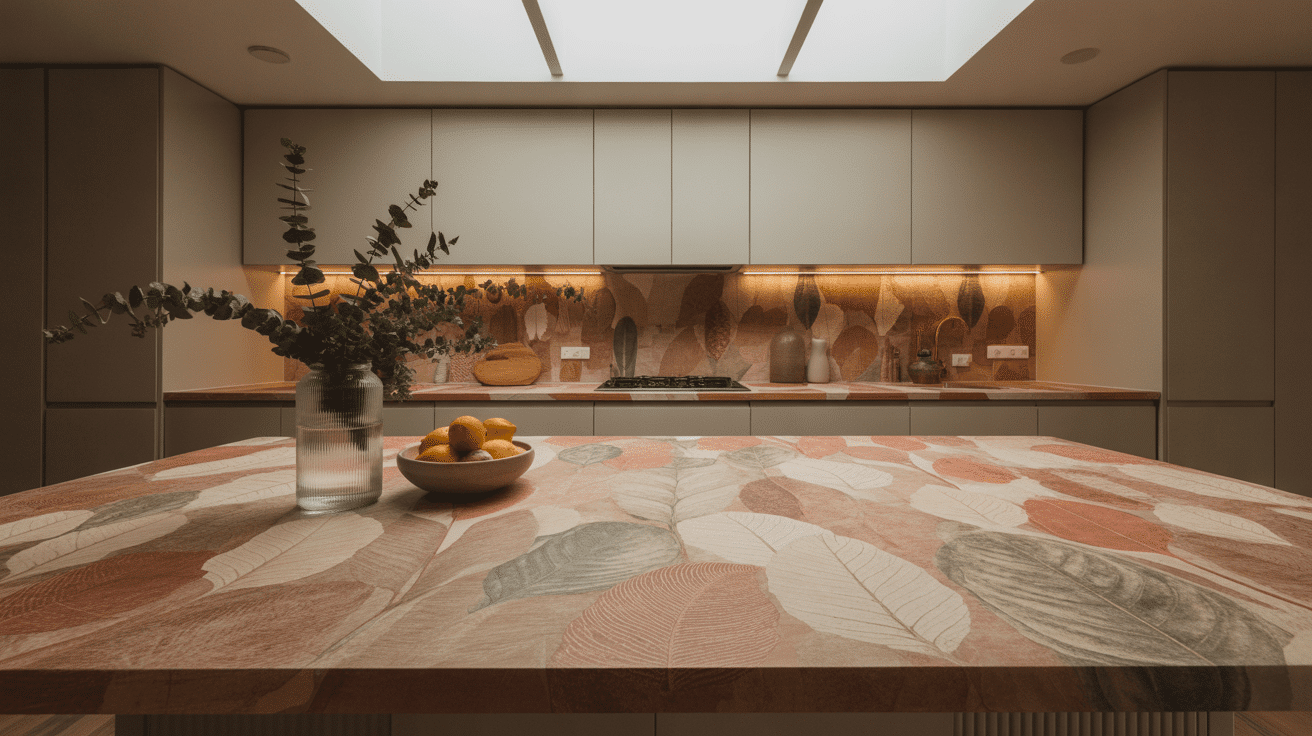
Pressed-paper work surfaces turn used paper and plant glues into remarkably strong tops with quiet depth. These built materials pair green thinking with the warm, flat look of natural stone.
The waterproof surface fights stains while growing richer like leather over the years. Its smooth-as-silk feel makes you want to touch it, and it provides a perfect base for food work.
16. Hand-Shaped Dining Dishes
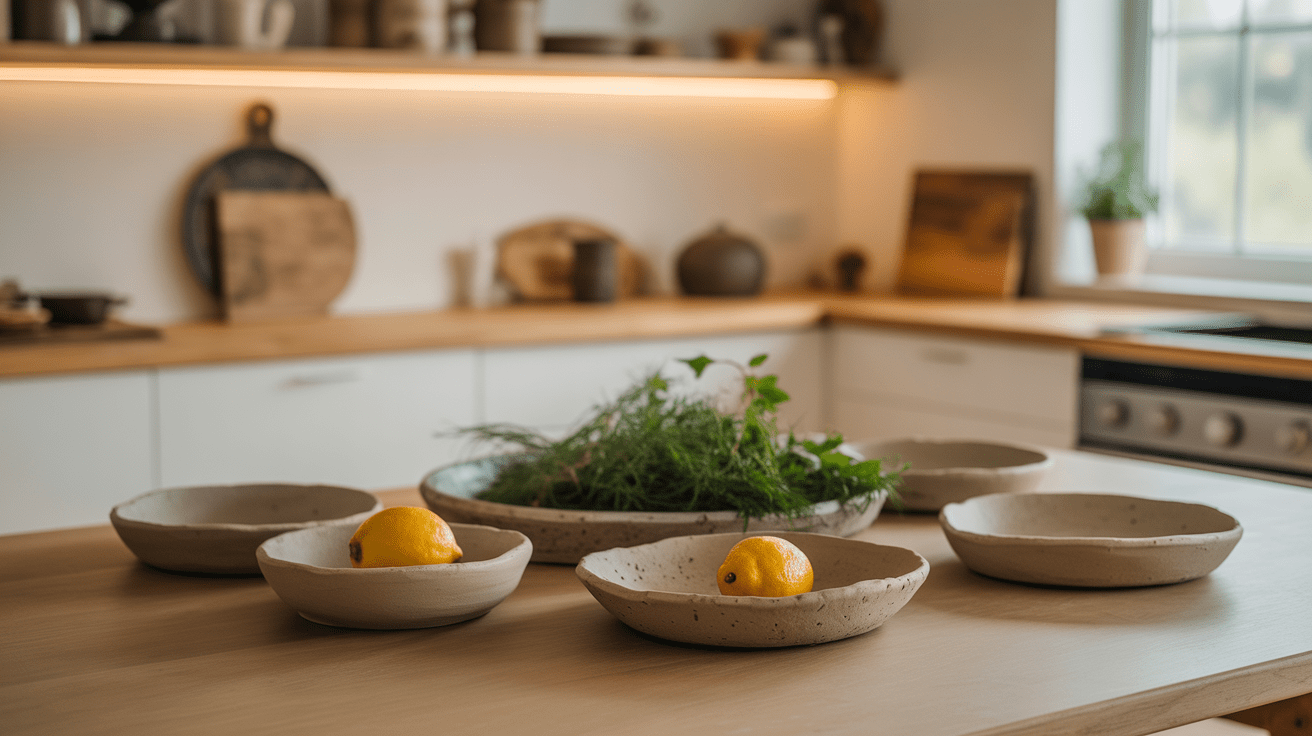
Hand-shaped dining dishes honor beauty in rough-edges through artist-made clay pieces with natural shapes and textures. These skilled works bring thought to meal times through their link to old ways of making things.
The small changes in glaze, form, and finish build a set that seems picked over time rather than bought at once. Their touch-worthy traits make eating better by working with all your senses.
17. Mushroom-Based Light Fixtures
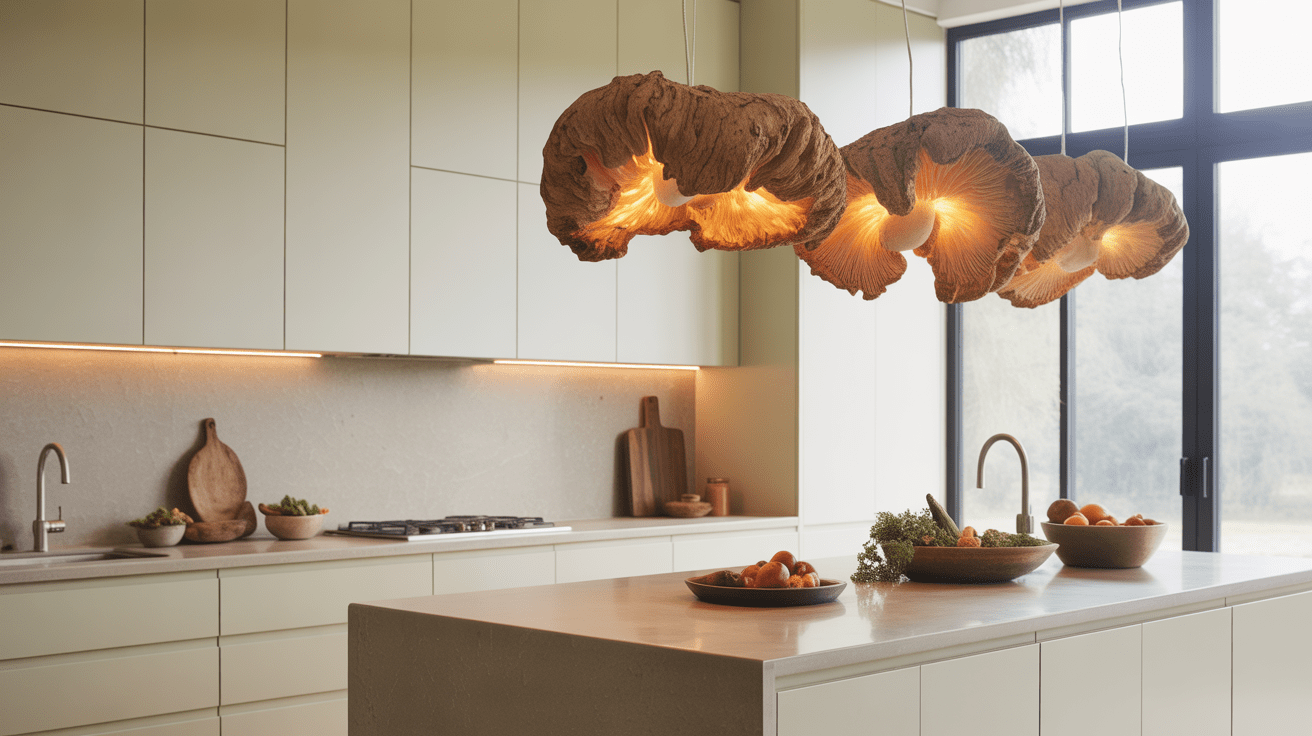
Mushroom-based light fixtures show cutting-edge plant materials grown from fungus roots into light, fully breaking down shapes. These new-style hangings bring organic forms taken straight from how things grow in the woods.
The see-through quality of thin mushroom parts creates a soft, warm glow unlike any standard material. As a carbon-catching material, these lights show the path forward for green design; beauty grown instead of built.
To Sum Up
The organic modern kitchen stands as a testament to thoughtful design that honors our connection to nature without sacrificing style or functionality. These spaces invite us to slow down and savor life’s simple pleasures.
By embracing this design philosophy, you create more than just a beautiful kitchen; you cultivate a sustainable sanctuary that promotes well-being and mindful living.
Natural elements ground us in an increasingly digital world, while modern touches keep the space practical for today’s lifestyle needs.
The beauty of this type of design lies in its eternality; neither trendy nor traditional, but eternally relevant and deeply personal. Your kitchen becomes an original expression of who you are and what you value.
Inspired to create your own organic modern kitchen? Share your ideas in the comments below! What element would you incorporate first?


